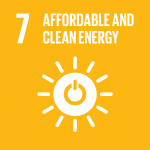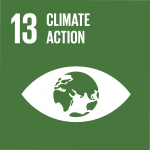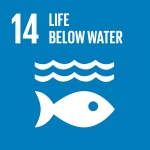Using Ocean-based Solutions for Carbon Capture in Indonesia

Xiaoyang Tian, UNDP Climate Change Officer, Indonesia
Seungyeun Oh, UNDP Programme Intern for Environment and Energy Unit, Indonesia
June 2021 - The impacts of climate change are felt first and foremost through water, including drought, flooding and sea-level rise. Indonesia is an archipelago composed of some 17,500 islands and has a coastline of 54,720 km, with three quarters of the country’s area being water. As such, the country is highly vulnerable to the impacts of climate change.
Conversely, water, particularly the ocean economy, can play a critical role in climate adaptation and mitigation, helping Indonesia’s meet their climate targets through their Nationally Determined Contributions (NDCs) under the Paris Agreement.
It is estimated that Indonesia's seagrasses and mangroves represent around 17 % of the world's blue carbon reservoir. With so much of Indonesia’s area being covered by ocean, the opportunity for blue carbon capture is significant.
The scientific consensus is that most of the carbon in mangrove forests is stored underground. According to the IPCC mangrove restoration can mitigate the release of 0.07 GtCO2 yr–1 through rewetting and take up 0.02–0.84 GtCO2 yr–1 through biomass and soil enhancement. Mangrove forests are included in the AFOLU Greenhouse Gas inventory in Indonesia. However, Indonesia's current inventory methodology does not include below-ground carbon capture, as data on this is not yet available.
In Indonesia, seagrass is valuable driver for blue cardon mitigation. Seagrasses, which are the only flowering plants growing in marine environments, are considered the most potent source of climate change mitigation due to their capacity to absorb and store carbon, along with mangroves.
For Indonesia, seagrass area in 1994 was estimated to be 3 million hectares[1], but has now been reduced to 876,000-1,847,000 hectares. It is therefore vital that conservation action, the protection and enhancement of mangrove forests and seagrass areas are prioritized in Indonesia’s newly enhanced NDC. This blue-carbon capture should also be coupled with ocean-based renewable energy solutions, more sustainable ocean-based transport, fisheries and marine aquaculture, along with other solutions for reducing emissions within the ocean sector.
UNDP is currently supporting the government to develop an Ocean Sector Roadmap for the inclusion of ocean-based climate solutions, specifically blue carbon capture in the NDC, particularly through the conservation and rehabilitation of seagrass and mangroves. The roadmap looks at existing climate change mitigation and actions, maps out the gaps and requirements for increasing climate ambition, as well as analyze the resources needed to put the plan into action. The initiative is part of Climate Promise Programme, which helps governments enhance their NDC commitments. UNDP will continue to support Indonesia in fulfilling its climate mitigation and ocean protection commitments in the coming year.
More information on UNDP Indonesia’s Climate Adaptation programme can be found here.
More information on UNDP’s Climate Promise initiative can be found here.
[1] Green, E.P., Short, F.T. and Frederick, T., 2003. World atlas of seagrasses. Univ of California Press.


